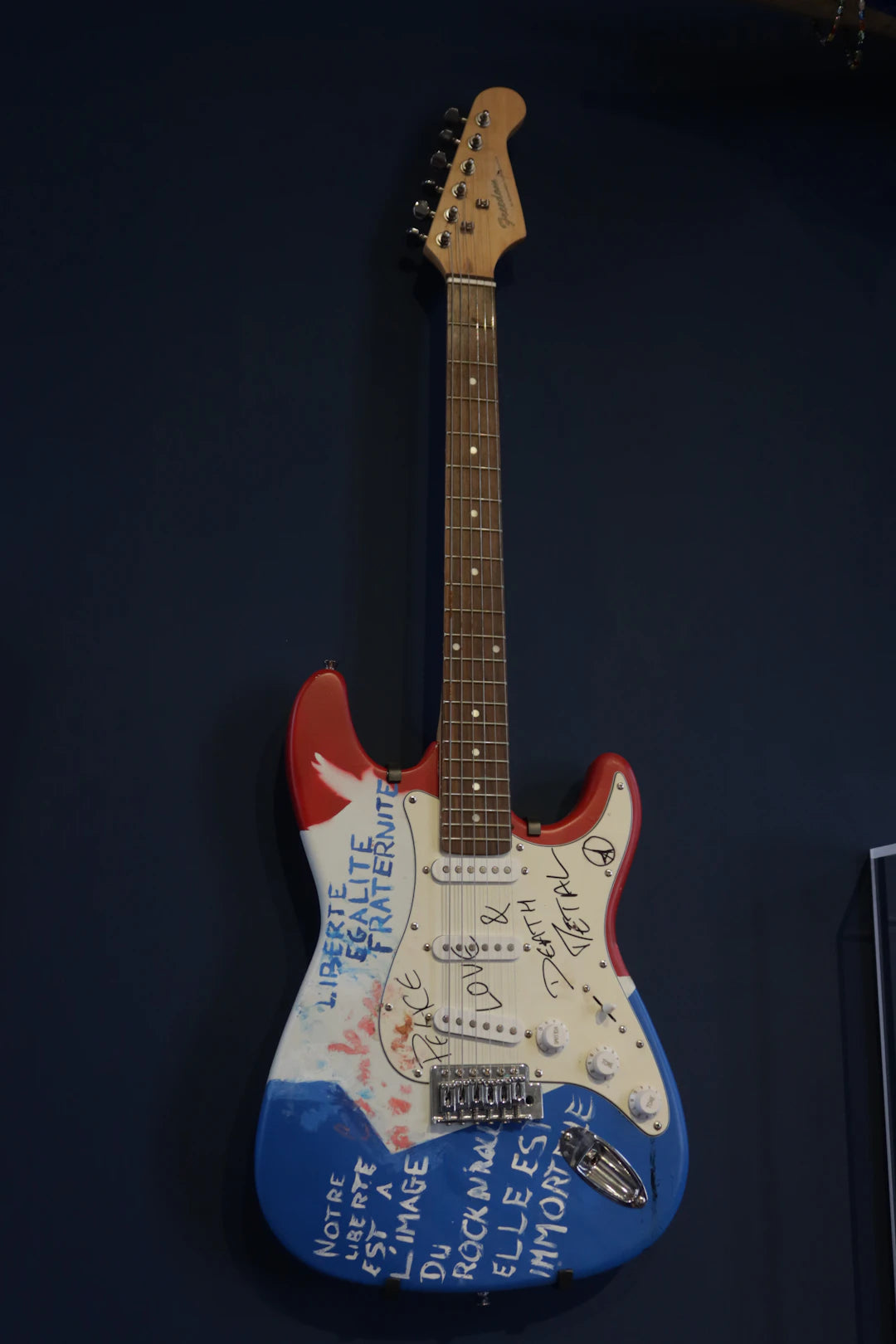Overview
This guide covers essential factors for painting your guitar, including different paint types (lacquer, polyurethane, nitrocellulose, water-based, and custom finishes), key considerations before starting (budget, skill level, environmental factors, and design concept), and a step-by-step painting process. It also includes maintenance tips and advice on finding professionals for custom work, emphasizing that your guitar's finish reflects your personal style and musical identity.
When it comes to personalizing your musical instrument, choosing the right paint for your guitar is like selecting the perfect notes for your next solo. Whether you own an Odyssey Solaris Tele Fat Neck SC or any other model, the finish can dramatically affect both aesthetics and sound. In this guide, we'll explore the essential factors to consider when painting your guitar, various types of paint, and tips for achieving a professional-looking finish.
Understanding Different Guitar Paint Types
The type of paint you choose for your guitar can influence its durability, visual appeal, and in some cases, even its sound. Here are some of the most common types of paints used in custom guitar painting:
1. Lacquer
Lacquer is one of the traditional finishes for guitars and is quite popular among luthiers. Its quick-drying nature allows for multiple spray applications in a short time. Lacquer provides a beautiful, glossy finish that enhances the wood grain while also resonating well with the sound. However, one drawback is its sensitivity to moisture and UV rays, which means it may require more upkeep than other finishes.
2. Polyurethane
For those seeking durability, polyurethane paint can be an excellent choice. This finish creates a thick protective layer that is resistant to scratches, moisture, and chemicals. Although it may lack the natural feel and resonance of lacquer, it offers greater protection for instruments that see a lot of use, making it ideal for custom guitar painting in Austin, where DJs and musicians often perform at lively venues.
3. Nitrocellulose
Nitrocellulose paints provide a deep, vibrant finish that many musicians love. It's a breathable finish, which means it won't choke the wood and can enhance sound quality. However, it does require patience and skill during application; a well-applied nitro finish can offer great results, but it is also easy to mess up if you're inexperienced.
4. Water-Based Paints
For environmentally-conscious individuals or those who prefer to work indoors, water-based paints present a great option. These paints are less toxic than their solvent-based counterparts and offer easy cleanup. While they may not produce the same deep gloss as lacquer or nitrocellulose, high-quality formulations can provide satisfactory results and durability.
5. Custom Paints and Finishes
If you wish to achieve a unique aesthetic, consider custom paints. Many artists specialize in mixing colors and finishes to create exclusive looks, perfect for adding a personal touch to your Odyssey Solaris Tele Fat Neck SC. Plus, this approach allows for creative motifs and complex designs that set your instrument apart from the rest.
Essential Considerations Before Painting Your Guitar
Before you dive into the painting process, it’s crucial to consider some essential factors to ensure the best outcome:
Budget
Consider how much you're willing to spend on both materials and professional assistance. Some paints can be pricey, especially if you decide to take the custom route.
Skill Level
Assess your skills. If you’re a beginner, it might be beneficial to consult with or hire a professional, especially for intricate designs or finishes. Many shops in Austin offer services for custom guitar painting, so don't hesitate to reach out.
Environmental Considerations
Ensure that you work in a well-ventilated area, especially when using paints that release fumes. Proper setup can also eliminate dust and debris, helping you achieve a cleaner finish.
Design Concept
Before you start painting, develop a clear concept of what you want to achieve. Sketch out designs or gather visual references to ensure you stay on track as you progress.
The Painting Process: Step by Step
Once you’ve decided on the paint type and gathered all necessary materials, it’s time to begin the painting process. Follow these steps for the best results:
Step 1: Preparation
Start by removing all hardware from the guitar, including strings, pickups, and knobs. Sand the guitar's surface lightly to remove the existing finish and ensure the paint adheres well.
Step 2: Cleaning
After sanding, clean the surface to remove any dust or particles. Use a soft cloth and some rubbing alcohol for that extra cleanliness.
Step 3: Primer
If you’re using lighter colors, it may be useful to apply a primer to enhance the vibrancy. Choose a primer compatible with your paint type and apply it evenly.
Step 4: Painting
With your primer dry, start applying the main paint. Use even strokes and don't rush; several thin coats will yield better results than one thick layer. Allow adequate drying time between coats.
Step 5: Finishing Touches
Once the paint has dried completely, consider applying a clear coat for added shine and protection. Ensure it’s compatible with the type of paint you’ve chosen. Sand lightly between coats for a smooth finish.
Maintenance Tips for Painted Guitars
To keep your guitar in pristine condition, follow these maintenance tips:
- Regular Cleaning: Dust the guitar occasionally and use a guitar-safe cleaner to remove any dirt or smudges.
- Avoid Extreme Conditions: Keep the guitar away from direct sunlight, humidity, or extreme temperatures that can damage the finish.
- Transportation: Always use a padded case when transporting your guitar to avoid scratches and dings.
- Professional Servicing: For deep scratches or chips, consider taking your guitar to a professional for repair rather than attempting to fix it yourself.
Finding the Right Professionals for Custom Work
If the painting process seems daunting, many talented artisans specialize in custom guitar painting in Austin. Research local professionals and read through reviews to find the right fit for your needs. Visiting stores or attending local music events can also connect you with skilled painters who can provide personalized advice and service.
Your Vision, Your Sound
Embracing creativity in your instruments makes a significant difference in how it feels to play. Whether you’re enhancing your Odyssey Solaris Tele Fat Neck SC or any other guitar, the right paint can beautifully reflect your personal style. Remember that choosing the right paint isn’t merely about color; it’s an expression of your musical identity. With proper preparation, a thoughtful approach, and an open mind, you can create a masterpiece that amplifies not only your sound but also your passion for music.
Linked Product

Odyssey Solaris Tele Fat Neck SC
The Odyssey Solaris Tele Fat Neck SC is designed for guitarists looking to enhance their Telecaster's neck position with a fuller low-end and pronounced midrange. Hand-wound in the USA, it features Alnico V magnets and a unique coil structure that provides a robust tone while maintaining clarity, making it suitable for a variety of musical styles, including blues and rock. Its durable construction ensures reliable performance, making it a practical choice for both studio and live settings.
View Product










